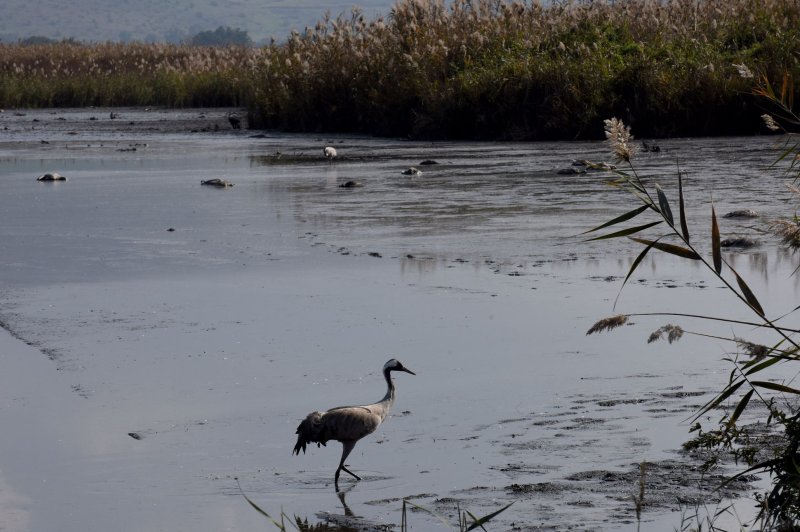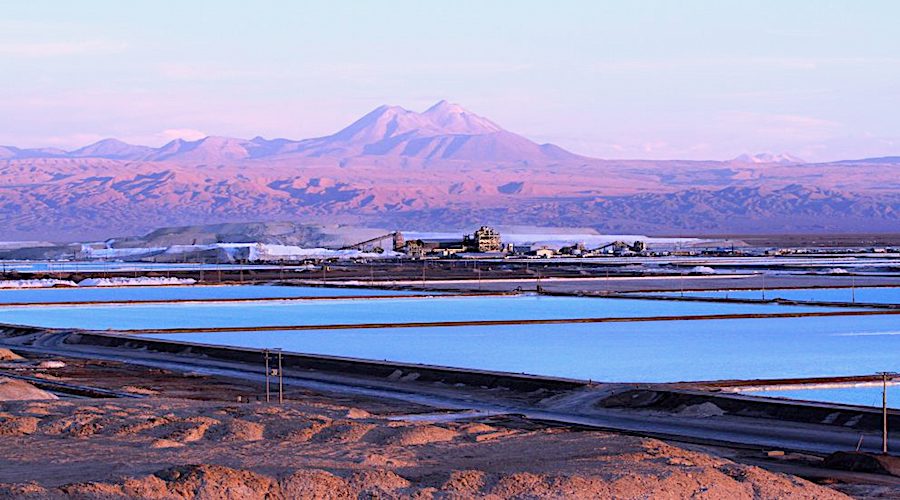SEOUL, Jan. 6 (UPI) -- Greenpeace Korea unveiled what it called the "last voting booth" in downtown Seoul on Thursday as part of a campaign to bring climate issues to the foreground of South Korea's presidential election in March.
The booth, a tattered replica of a traditional polling machine, was placed near the city's iconic Gyeongbokgung Palace to raise awareness that this election "could be the last vote to stop the climate crisis in Korean political history," the environmental group said in a statement.
A video loop inside the booth showed a simulation of the palace submerged under flooding due to extreme weather and rising sea levels.
"We think that climate change is one of the most important issues to be discussed during the presidential campaign," Daul Jang, government relations and advocacy specialist for Greenpeace Korea, told UPI. "So we wanted to show people that unless we address climate change, as soon as possible and as ambitiously as possible, our future is at risk right now."
South Korea remains heavily dependent on fossil fuels for its energy needs, generating around 40% of its electricity from coal and only 6.5% from renewable sources.
The country has pledged to achieve carbon neutrality by 2050. President Moon Jae-in introduced a $60 billion Green New Deal in 2020 to invest in eco-friendly industries and technologies. Moon also committed in November to reduce the country's greenhouse gas emissions by at least 40% by 2030, a significant upgrade from the previous target of 26%.
However, Greenpeace and other climate watchdogs say South Korea's goals are not nearly enough to meet the demands of the 2015 Paris Climate Accords, which aim to limit global warming to no more than 1.5 degrees Celsius above pre-industrial levels in order to avoid environmental catastrophe.
The U.N. Intergovernmental Panel on Climate Change released a report in August that Secretary-General Antonio Guterres called a "code red for humanity," saying that the earth was already "perilously close" to the 1.5-degree threshold and required bold and immediate action.
Greenpeace Korea released a seven-point climate policy agenda, which includes raising the ratio of renewable energy to 50% and completely phasing out coal plants by 2030, and has asked the presidential candidates to respond.
Yoon Suk-yeol, the candidate from the opposition People Power Party, has indicated support for South Korea's 2050 carbon-neutrality goal, while Lee Jae-myung from Moon's Democratic Party has proposed moving the target up by 10 years and establishing a carbon tax.
Jang said that neither of the two major candidates has been specific enough with their plans, however, and noted that climate change has been an afterthought on the campaign trail and media coverage. Greenpeace is calling for the candidates to hold climate-focused television debates.
The environmental group also warned Thursday of the perils to South Korea's economic bottom line posed by climate change. It shared a Deloitte Korea report that estimated the South Korean economy could lose a total of $780 billion by the year 2070 if it fails to adequately respond to the climate crisis, while aggressive action could add over $1.9 trillion in that same time period.
Climate change "is not considered as important as security or economic issues, even though the climate crisis itself is a serious national security and national economic issue," Jang said. "This is the last Korean election for us to properly address climate change in time."



![Global changes in the deuterium isotopomer ratio (ΔD6<sup>S</sup>/D6<sup>R</sup><sub>N</sub>) of Sphagnum during the twentieth century representing changes in the photorespiration to photosynthesis ratio. (A) Global distribution of investigated sites. (B) Response of the D6<sup>S</sup>/D6<sup>R</sup> ratio per unit change in 1000/[CO<sub>2</sub>] between modern and historical Sphagnum samples (ΔD6<sup>S</sup>/D6<sup>R</sup><sub>N</sub>). Five water table depths (WT) categories (in cm) are indicated by vertical dashed lines. Sphagnum subgenera are indicated on the x-axis by gray/white shading: AC, ACUTIFOLIA (dark gray); CU, CUSPIDATA (light gray); SP, SPHAGNUM (white). Error bars indicate standard error, n = 1–4 (see Table S1 for more information). Numbers above error bars correspond to sample sites as numbered in (A). Credit: DOI: 10.1038/s41598-021-02953-1 Rising atmospheric CO2 concentrations globally affect photosynthesis of peat-forming mosses](https://scx1.b-cdn.net/csz/news/800a/2022/rising-atmospheric-co2.jpg)













 ©
©